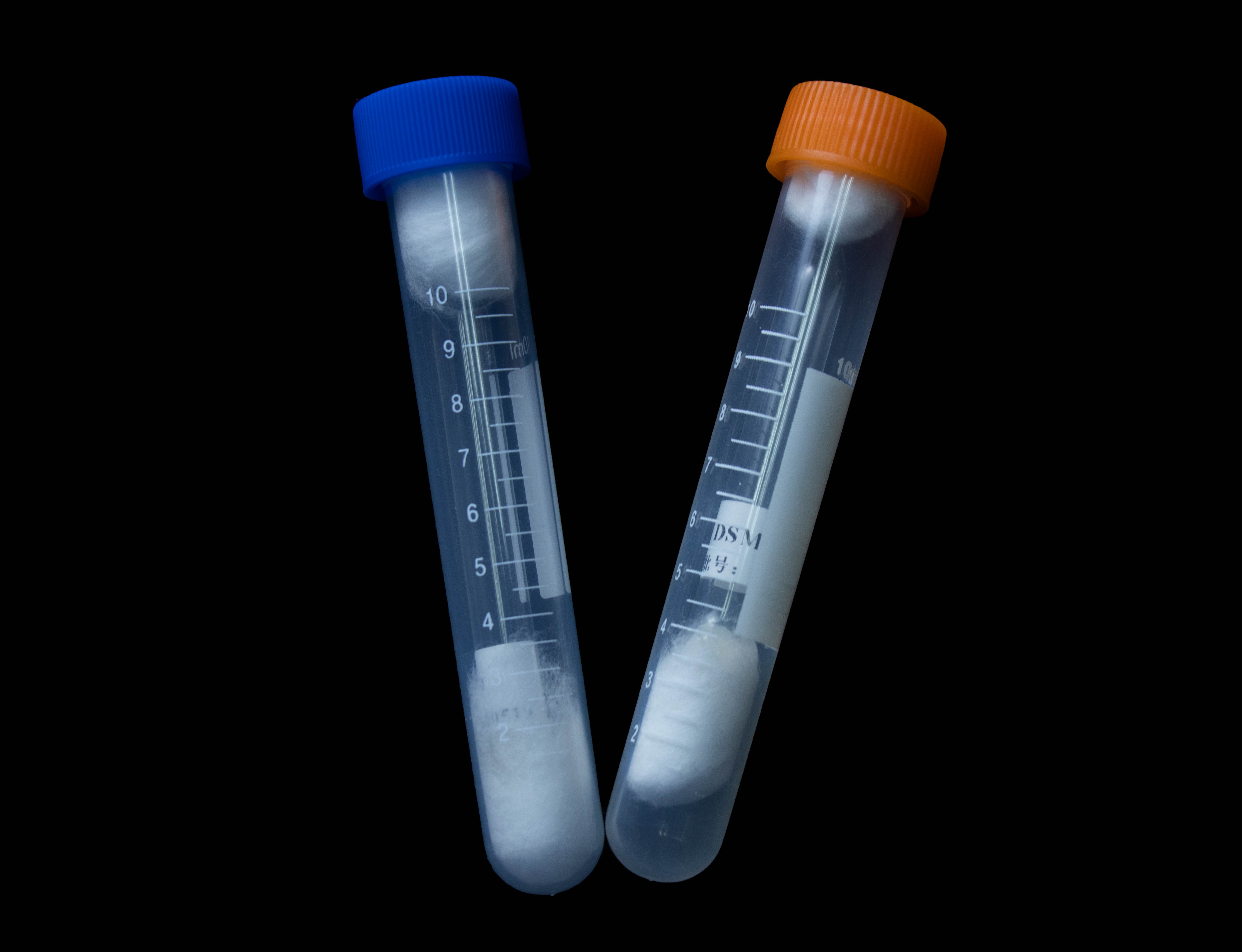
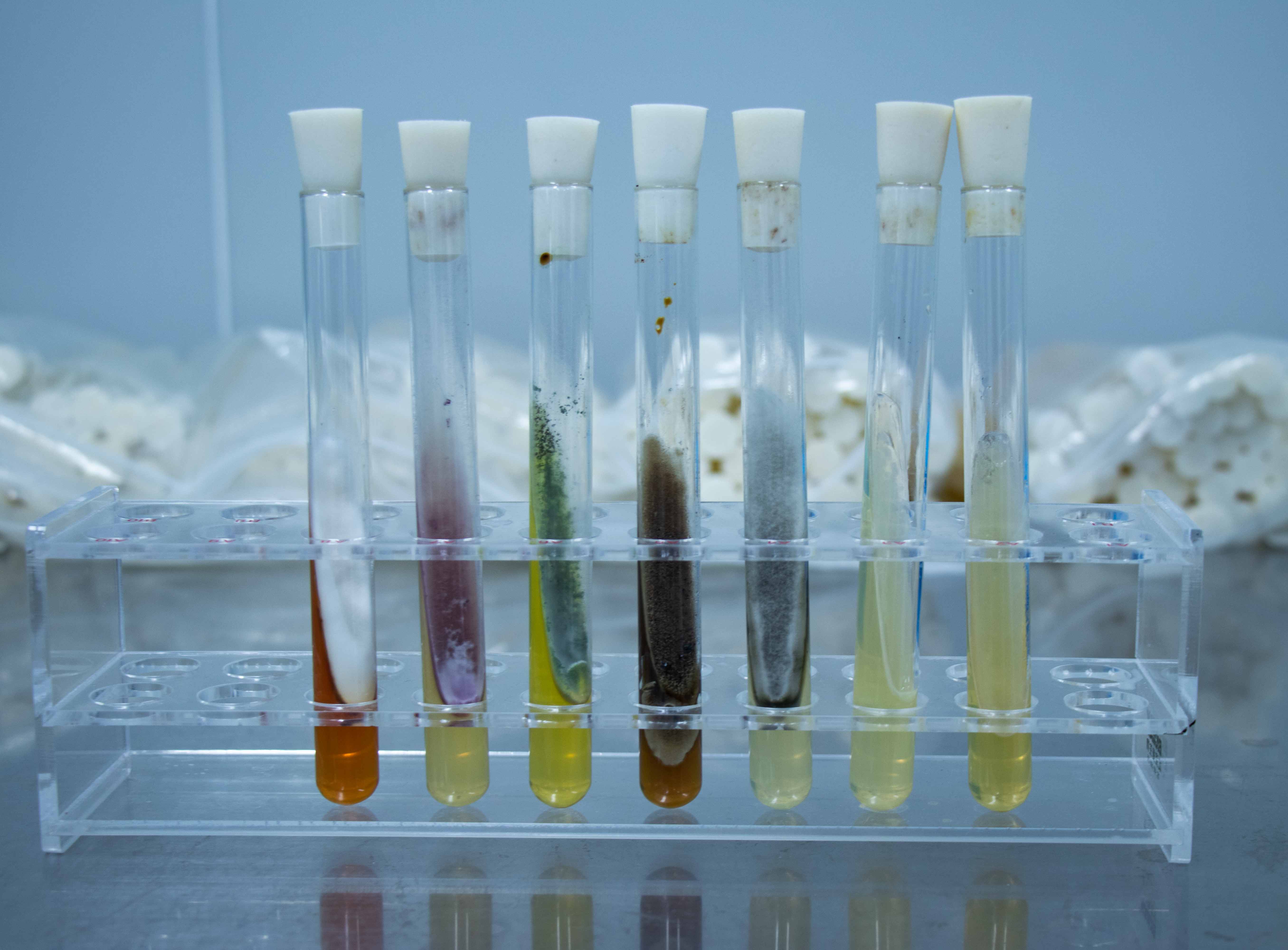
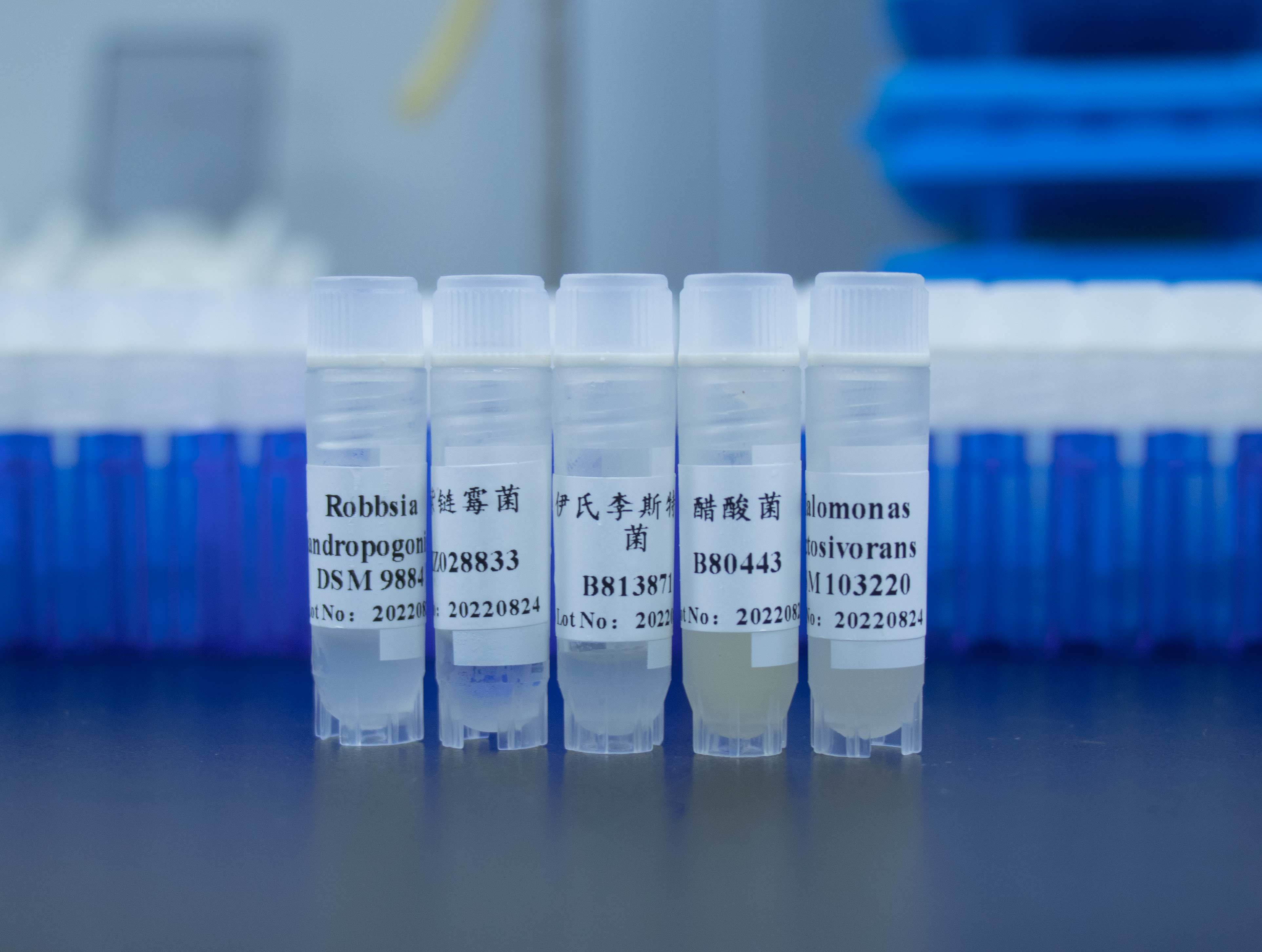
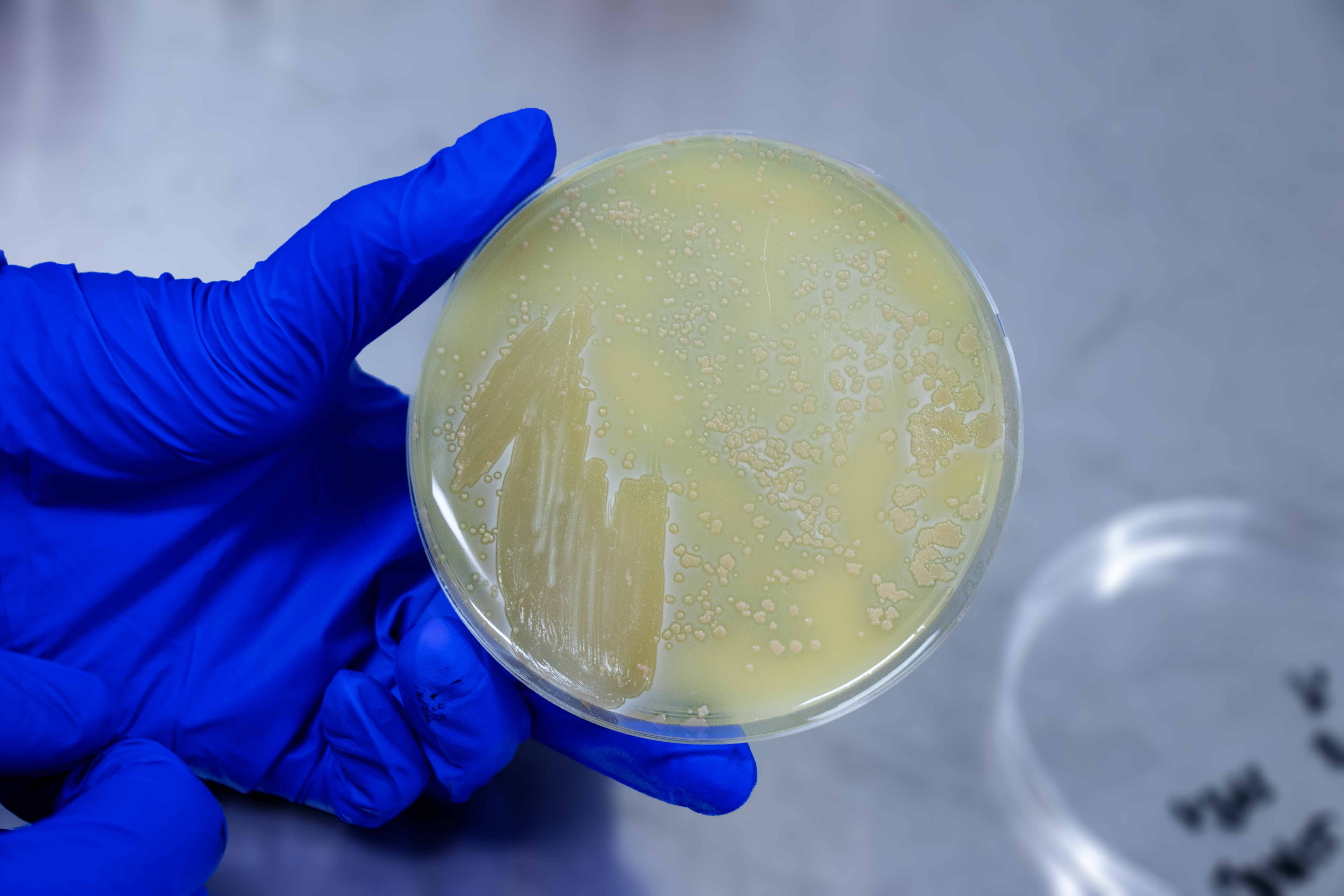
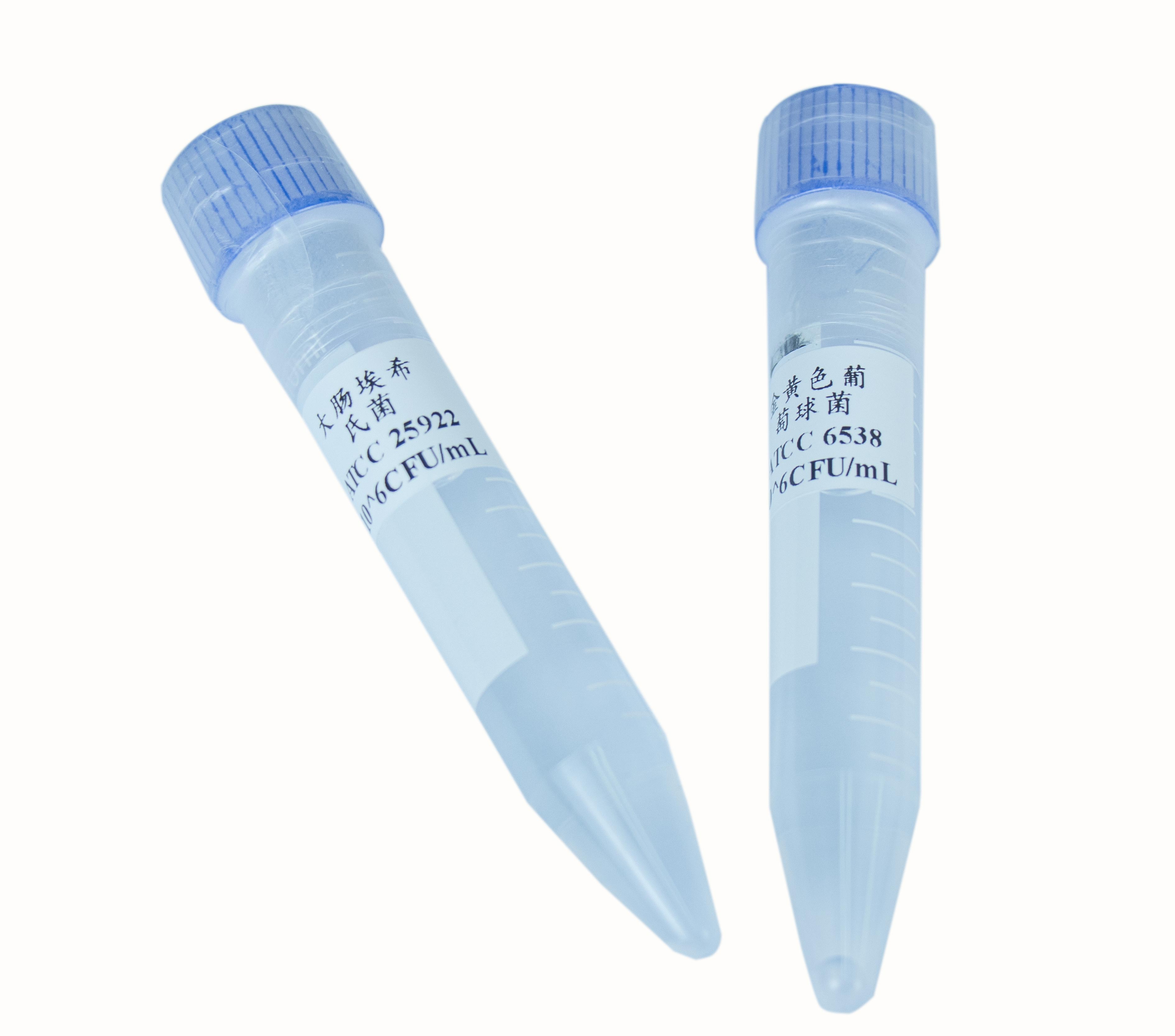
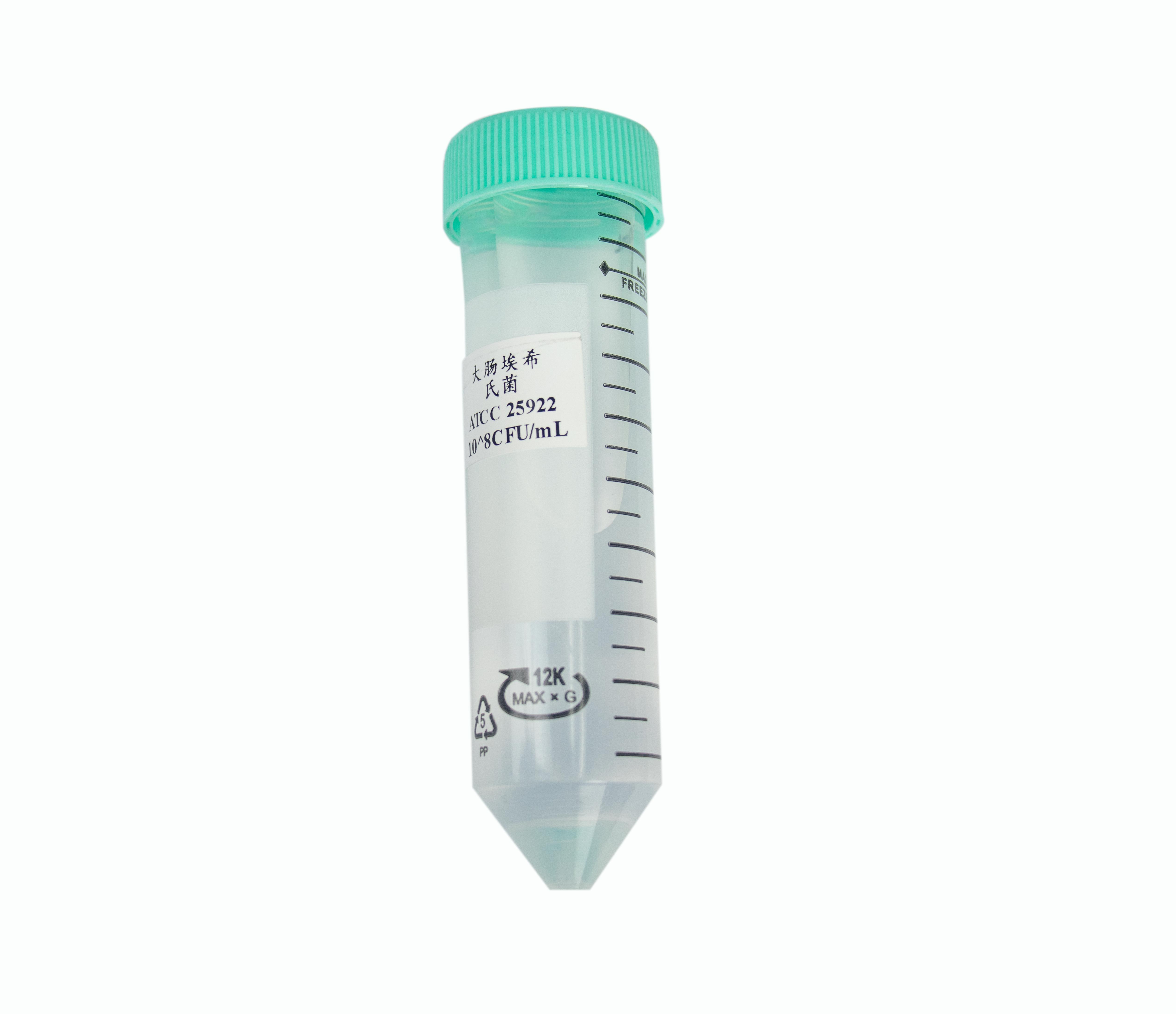

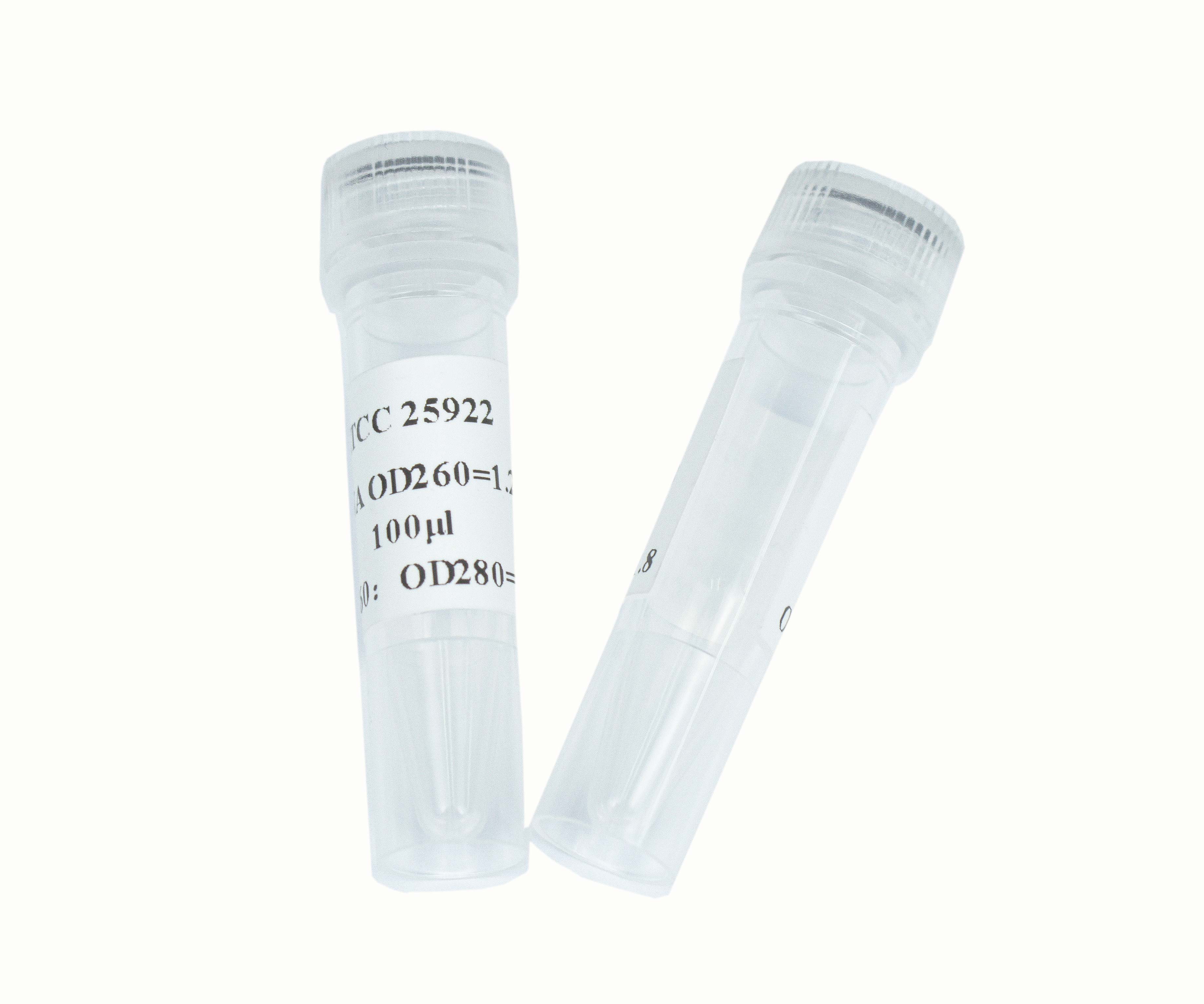
| 產(chǎn)品名稱 | WPE1-NB14 |
|---|---|
| 商品貨號 | B238588 |
| Organism | Homo sapiens, human |
| Tissue | prostate |
| Cell Type | epithelial |
| Product Format | frozen |
| Morphology | epithelial |
| Culture Properties | adherent |
| Biosafety Level | 2 [Cells contain human HPV-18 viral DNA sequences]
Biosafety classification is based on U.S. Public Health Service Guidelines, it is the responsibility of the customer to ensure that their facilities comply with biosafety regulations for their own country. |
| Disease | normal |
| Age | 54 years |
| Gender | male |
| Ethnicity | Caucasian, White |
| Storage Conditions | liquid nitrogen vapor phase |
| Karyotype | The depositor reports that at passage 44, a majority of the cells were near diploid, 45-47, X, -Y. Loss of Y chromosome has been observed in prostate cancer. |
| Images |  |
| Derivation | WPE1-NB14 cells were derived from RWPE-1 cells (ATCC CRL-11609) after exposure to N-methyl-N-nitrosourea (MNU) Ref   Webber MM, et al. Human cell lines as an in vitro/in vivo model for prostate carcinogenesis and progression. Prostate 47: 1-13, 2001. PubMed: 11304724. Epithelial cells from the peripheral zone of a histologically normal adult human prostate were transfected with a plasmid carrying one copy of the human papilloma virus 18 (HPV-18) genome to establish the RWPE-1 cell line (ATCC CRL-11609). Webber MM, et al. Human cell lines as an in vitro/in vivo model for prostate carcinogenesis and progression. Prostate 47: 1-13, 2001. PubMed: 11304724. Epithelial cells from the peripheral zone of a histologically normal adult human prostate were transfected with a plasmid carrying one copy of the human papilloma virus 18 (HPV-18) genome to establish the RWPE-1 cell line (ATCC CRL-11609). |
| Clinical Data | 54 years
Caucasian
male |
| Antigen Expression | kallikrein 3, KLK3 (prostate specific antigen, PSA); Homo sapiens, expressed (upon exposure to androgen)
Ref   Webber MM, et al. Human cell lines as an in vitro/in vivo model for prostate carcinogenesis and progression. Prostate 47: 1-13, 2001. PubMed: 11304724 (upon exposure to androgen) Webber MM, et al. Human cell lines as an in vitro/in vivo model for prostate carcinogenesis and progression. Prostate 47: 1-13, 2001. PubMed: 11304724 (upon exposure to androgen) |
| Receptor Expression | androgen receptor, expressed Ref   Webber MM, et al. Human cell lines as an in vitro/in vivo model for prostate carcinogenesis and progression. Prostate 47: 1-13, 2001. PubMed: 11304724(upregulated upon exposure to androgen) Webber MM, et al. Human cell lines as an in vitro/in vivo model for prostate carcinogenesis and progression. Prostate 47: 1-13, 2001. PubMed: 11304724(upregulated upon exposure to androgen) |
| Cellular Products | cytokeratin 18 Ref   Webber MM, et al. Human cell lines as an in vitro/in vivo model for prostate carcinogenesis and progression. Prostate 47: 1-13, 2001. PubMed: 11304724 Webber MM, et al. Human cell lines as an in vitro/in vivo model for prostate carcinogenesis and progression. Prostate 47: 1-13, 2001. PubMed: 11304724cytokeratin 8 Ref   Webber MM, et al. Human cell lines as an in vitro/in vivo model for prostate carcinogenesis and progression. Prostate 47: 1-13, 2001. PubMed: 11304724 Webber MM, et al. Human cell lines as an in vitro/in vivo model for prostate carcinogenesis and progression. Prostate 47: 1-13, 2001. PubMed: 11304724 |
| Tumorigenic | Yes |
| Effects | Yes, in nude mice Ref
  Webber MM, et al. Human cell lines as an in vitro/in vivo model for prostate carcinogenesis and progression. Prostate 47: 1-13, 2001. PubMed: 11304724 Webber MM, et al. Human cell lines as an in vitro/in vivo model for prostate carcinogenesis and progression. Prostate 47: 1-13, 2001. PubMed: 11304724Yes, the cells form colonies in soft agar (moderate efficiency) Ref
  Webber MM, et al. Human cell lines as an in vitro/in vivo model for prostate carcinogenesis and progression. Prostate 47: 1-13, 2001. PubMed: 11304724 Webber MM, et al. Human cell lines as an in vitro/in vivo model for prostate carcinogenesis and progression. Prostate 47: 1-13, 2001. PubMed: 11304724 |
| Comments | WPE1-NB14 cells belong to a family of cell lines, referred to as the MNU cell lines, which are all derived from RWPE-1 cells after exposure to MNU. The larger family of cell lines, including RWPE-1 cells with a common lineage, mimics multiple steps in progression from normal epithelium to prostatic intra-epithelial neoplasia, and then to invasive cancer. The MNU cell lines, in order of increasing malignancy are: WPE1-NA22 (ATCC CRL-2849), WPE1-NB14 (ATCC CRL-2850), WPE1-NB11 (ATCC CRL-2851), and WPE1-NB26 (ATCC CRL-2852). WPE1-NB14 cells show moderate invasive ability in the in vitro Boyden chamber invasion assay Ref The colony forming efficiency (CFE) of 1.85% and the invasive ability of WPE1-NB14 cells are both greater than those of WPE1-NA22 cells (ATCC CRL-2849) Ref The cells form small tumors after subcutaneous injection. The tumors are a little larger than those formed by WPE1-NA22 cells (ATCC CRL-2849). The depositor report that the parent RWPE-1 cell line (ATCC CRL-11609) was screened for Hepatitis B and C, and human immunodeficiency viruses, and was found to be negative.
|
| Complete Growth Medium | The base medium for this cell line is provided by Invitrogen (GIBCO) as part of a kit: Keratinocyte Serum Free Medium (K-SFM), Kit Catalog Number 17005-042. This kit is supplied with each of the two additives required to grow this cell line (bovine pituitary extract (BPE) and human recombinant epidermal growth factor (EGF).
To make the complete growth medium, you will need to add the following components to the base medium:
|
| Subculturing | Volumes used in this protocol are for 75 cm2 flask; proportionally reduce or increase amount of dissociation medium for culture vessels of other sizes.
Note: Cells grown under serum-free or reduced serum conditions may not attach strongly during the 24 hours after subculture and should be disturbed as little as possible during that period. Subcultivation Ratio: A subcultivation ratio of 1:3 to 1:5 is recommended
Medium Renewal: Every 48 hours
Note: For more information on enzymatic dissociation and subculturing of cell lines consult Chapter 10 in Culture of Animal Cells, a Manual of Basic Technique by R. Ian Freshney, 3rd edition, published by Alan R. Liss, N.Y., 1994. |
| Cryopreservation | Complete growth medium supplemented with 15% fetal bovine serum and 10% (v/v) DMSO. Cell culture tested DMSO is available as ATCC® Catalog No. 4-X.
|
| Culture Conditions | Temperature: 37°C Atmosphere: Air, 95%; Carbon dioxide (CO2), 5% |
| STR Profile | Amelogenin: X CSF1PO: 13 D13S317: 14 D16S539: 9,11 D5S818: 12,15 D7S820: 10,11 THO1: 8,9.3 TPOX: 8,11 vWA: 18 |
| Population Doubling Time | 38 hours |
| Name of Depositor | MM Webber |
| Year of Origin | 1994 |
| References | Bello D, et al. Androgen responsive adult human prostatic epithelial cell lines immortalized by human papillomavirus 18. Carcinogenesis 18: 1215-1223, 1997. PubMed: 9214605 Webber MM, et al. Acinar differentiation by non-malignant immortalized human prostatic epithelial cells and its loss by malignant cells. Carcinogenesis 18: 1225-1231, 1997. PubMed: 9214606 Webber MM, et al. Prostate specific antigen and androgen receptor induction and characterization of an immortalized adult human prostatic epithelial cell line. Carcinogenesis 17: 1641-1646, 1996. PubMed: 8761420 Okamoto M, et al. Interleukin-6 and epidermal growth factor promote anchorage-independent growth of immortalized human prostatic epithelial cells treated with N-methyl-N-nitrosourea. Prostate 35: 255-262, 1998. PubMed: 9609548 Webber MM, et al. Immortalized and tumorigenic adult human prostatic epithelial cell lines: characteristics and applications. Part I. Cell markers and immortalized nontumorigenic cell lines. Prostate 29: 386-394, 1996. PubMed: 8977636 Webber MM, et al. Immortalized and tumorigenic adult human prostatic epithelial cell lines: characteristics and applications Part 2. Tumorigenic cell lines. Prostate 30: 58-64, 1997. PubMed: 9018337 Webber MM, et al. Immortalized and tumorigenic adult human prostatic epithelial cell lines: characteristics and applications. Part 3. Oncogenes, suppressor genes, and applications. Prostate 30: 136-142, 1997. PubMed: 9051152 Kremer R, et al. ras Activation of human prostate epithelial cells induces overexpression of parathyroid hormone-related peptide. Clin. Cancer Res. 3: 855-859, 1997. PubMed: 9815759 Jacob K, et al. Osteonectin promotes prostate cancer cell migration and invasion: a possible mechanism for metastasis to bone. Cancer Res. 59: 4453-4457, 1999. PubMed: 10485497 Achanzar WE, et al. Cadmium induces c-myc, p53, and c-jun expression in normal human prostate epithelial cells as a prelude to apoptosis. Toxicol. Appl. Pharmacol. 164: 291-300, 2000. PubMed: 10799339 Achanzar WE, et al. Cadmium-induced malignant transformation of human prostate epithelial cells. Cancer Res. 61: 455-458, 2001. PubMed: 11212230 Bello-DeOcampo D, et al. Laminin-1 and alpha6beta1 integrin regulate acinar morphogenesis of normal and malignant human prostate epithelial cells. Prostate 46: 142-153, 2001. PubMed: 11170142 Webber MM, et al. Human cell lines as an in vitro/in vivo model for prostate carcinogenesis and progression. Prostate 47: 1-13, 2001. PubMed: 11304724 Quader ST, et al. Evaluation of the chemopreventive potential of retinoids using a novel in vitro human prostate carcinogenesis model. Mutat. Res. 496: 153-161, 2001. PubMed: 11551491 Webber MM, et al. A human prostatic stromal myofibroblast cell line WPMY-1: a model for stromal-epithelial interactions in prostatic neoplasia. Carcinogenesis 20: 1185-1192, 1999. PubMed: 10383888 Bello-DeOcampo D, et al. The role of alpha 6 beta 1 integrin and EGF in normal and malignant acinar morphogenesis of human prostatic epithelial cells. Mutat. Res. 480-481: 209-217, 2001. PubMed: 11506815 Webber MM, et al. Modulation of the malignant phenotype of human prostate cancer cells by N-(4-hydroxyphenyl)retinamide (4-HPR). Clin. Exp. Metastasis 17: 255-263, 1999. PubMed: 10432011 Sharp RM, et al. N-(4-hydroxyphenyl)retinamide (4-HPR) decreases neoplastic properties of human prostate cells: an agent for prevention. Mutat. Res. 496: 163-170, 2001. PubMed: 11551492 Carruba G, et al. Regulation of cell-to-cell communication in non-tumorigenic and malignant human prostate epithelial cells. Prostate 50: 73-82, 2002. PubMed: 11816015 Achanzar WE, et al. Altered apoptotic gene expression and acquired apoptotic resistance in cadmium-transformed human prostate epithelial cells. Prostate 52: 236-244, 2002. PubMed: 12111698 Carruba G, et al. Intercellular communication and human prostate carcinogenesis. Ann. N.Y. Acad. Sci. 963: 156-168, 2002. PubMed: 12095941 Saladino F, et al. Connexin expression in nonneoplastic human prostate epithelial cells. Ann. N.Y. Acad. Sci. 963: 213-217, 2002. PubMed: 12095946 Hegarty PK, et al. Effects of cyclic stretch on prostatic cells in culture. J. Urol. 168: 2291-2295, 2002. PubMed: 12394777 Lugassy C, et al. Human melanoma cell migration along capillary-like structures in vitro: a new dynamic model for studying extravascular migratory metastasis. J. Invest. Dermatol. 119: 703-704, 2002. PubMed: 12230517 Brambila EM, et al. Chronic arsenic-exposed human prostate epithelial cells exhibit stable arsenic tolerance: mechanistic implications of altered cellular glutathione and glutathione S-transferase. Toxicol. Appl. Pharmacol. 183: 99-107, 2002. PubMed: 12387749 Achanzar WE, et al. Inorganic arsenite-induced malignant transformation of human prostate epithelial cells. J. Natl. Cancer Inst. 94: 1888-1891, 2002. PubMed: 12488483 Hay, R. J., Caputo, J. L., and Macy, M. L., Eds. (1992), ATCC Quality Control Methods for Cell Lines. 2nd edition, Published by ATCC. Caputo, J. L., Biosafety procedures in cell culture. J. Tissue Culture Methods 11:223-227, 1988. Fleming, D.O., Richardson, J. H., Tulis, J.J. and Vesley, D., (1995) Laboratory Safety: Principles and Practice. Second edition, ASM press, Washington, DC. |
| 梅經(jīng)理 | 17280875617 | 1438578920 |
| 胡經(jīng)理 | 13345964880 | 2438244627 |
| 周經(jīng)理 | 17757487661 | 1296385441 |
| 于經(jīng)理 | 18067160830 | 2088210172 |
| 沈經(jīng)理 | 19548299266 | 2662369050 |
| 李經(jīng)理 | 13626845108 | 972239479 |


 在線咨詢
在線咨詢